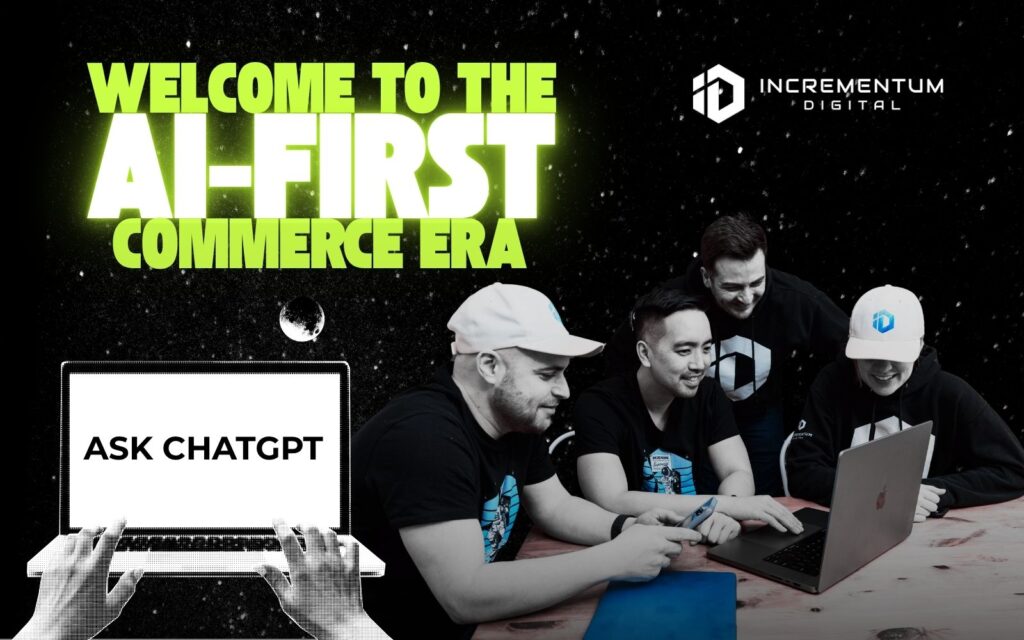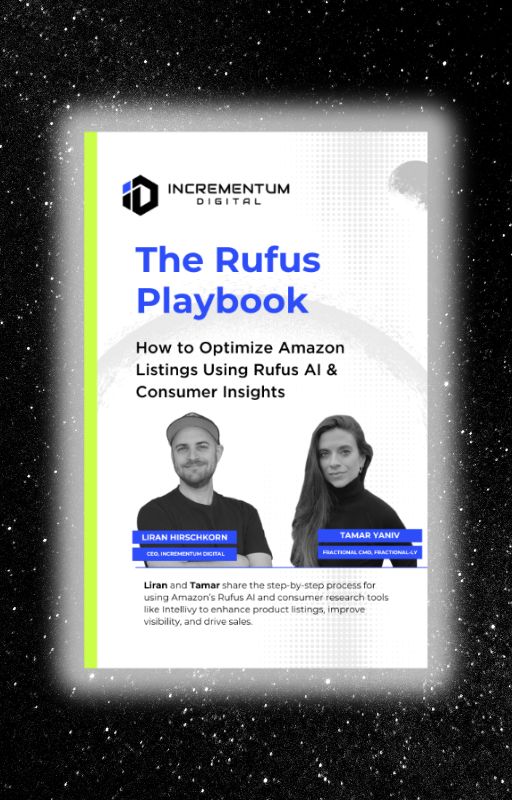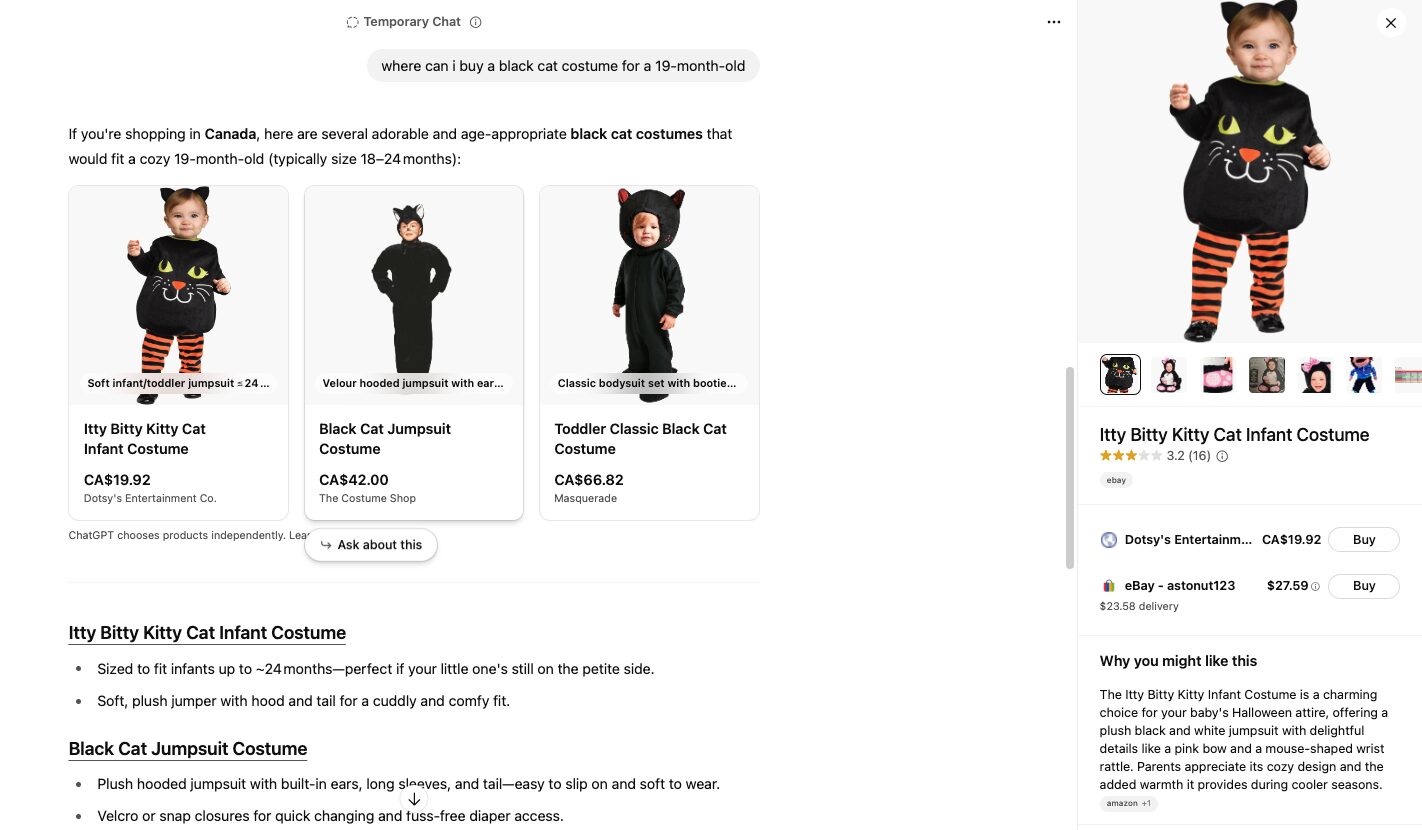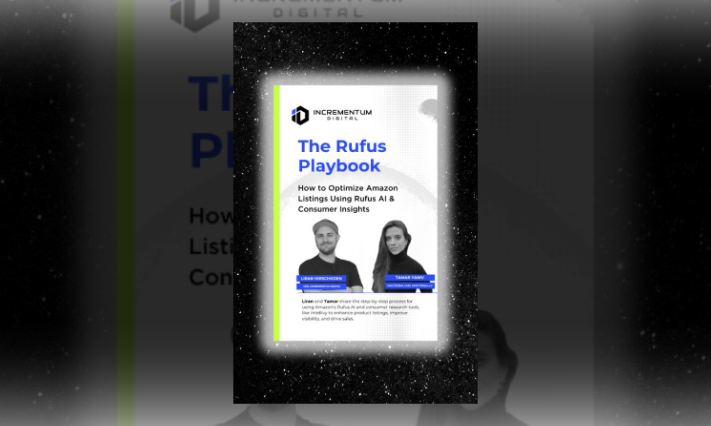eCommerce News
Generative Engine Optimization Crash Course: How E-commerce Brands Can Win the AI Search Revolution

The era of traditional SEO, i.e., stuffing keywords into product titles and hoping for the best, is over. We’ve entered the age of AI-first commerce, where product discovery is increasingly driven by generative engines like ChatGPT, Perplexity, Claude, and Amazon’s own AI-powered search infrastructure.

Learn How to Make Listings That Convert in 2025!
Read our step-by-step guide on how to optimize your listings using Rufus AI insights. Sign up for our newsletter and get your copy for free!
Show me howYounger generations aren’t just browsing anymore; they’re prompting. Gen Z, in particular, is asking AI tools for everything from skincare recommendations to gift ideas and product comparisons. Their decision-making flows through language models.
@snarkymarky It’s becoming an issue I fear 😭
If your brand doesn’t speak their language… and more importantly, if it doesn’t show up when the model responds… you’re missing the moment.
This shift demands a new strategy: Generative Engine Optimization (GEO). GEO is how ecommerce brands adapt product content for the way large language models interpret, summarize, and present information. It’s not about chasing keywords. It’s about becoming the structured, clear, and relevant source that AI chooses to surface.
If your content isn’t designed for the engine, you’re not part of the conversation. GEO fixes that.
In this comprehensive deep dive, we’ll break down what Generative Engine Optimization actually is, why it matters now more than ever, and how leading brands are already using it to gain visibility, improve conversions, and future-proof their ecommerce strategy.
What is GEO and Why It Matters
Generative Engine Optimization (GEO) is the strategic process of optimizing your content so it becomes visible, relevant, and citable by AI-powered generative engines, like ChatGPT, Perplexity, Claude, Gemini, and Google AI Overviews.
In the case of ecommerce brands, the goal is get your product content surfaced within AI-generated answers.
Traditional SEO vs. GEO
- Traditional SEO: Built around keywords, backlinks, and ranking on Google. It aims to get visitors to click through.
- GEO: Focuses on how large language models parse, interpret, and synthesize content. It matters more how clearly structured and semantic your product data is, not how many keywords you stuff in.
GEO emphasizes:
- Structured clarity: formats that LLMs can extract and repackage without ambiguity.
- Semantic intent: writing in a context-aware way that maps to user questions and use cases, not vague marketing jargon.
GEO Case Spotlight: Cetaphil Rewrites for AI-First Era
In a recent Instagram post, Ad Age spotlighted how Cetaphil is evolving its product content strategy to better align with AI-powered discovery. The brand is moving away from vague, marketing-heavy language and instead rewriting product descriptions with clear, benefit-led phrasing, designed to be easily interpreted by large language models like ChatGPT.
Rather than abstract claims, the copy now emphasizes practical use cases like “daily use for eczema-prone skin” or “soothes dry, sensitive skin.”
The goal isn’t just to inform the customer, but to ensure that AI engines can accurately summarize and surface Cetaphil’s products in conversational and search-driven environments.
The formatting is changing too. Cetaphil is shifting toward structured, scannable layouts with bullet points and simple sentence construction. This not only improves readability for humans but also enhances how well generative AI can parse and cite product details in response to shopper queries.
As Ad Age notes, with Gen Z increasingly turning to AI tools for purchase guidance, brands like Cetaphil are setting the pace by embracing GEO and positioning themselves to be discovered, recommended, and trusted in an AI-first ecommerce landscape.
GEO in Action: How Brands Can Implement It Today
Let’s break down how GEO works in practice, with a step-by-step framework any brand can follow.
To illustrate the process, we’ll use a fictional example: “Pawesome”, a premium pet supplement brand specializing in joint support chews for senior dogs.
Step 1: Extract Real Consumer Search Intent
Before generating content, Pawesome uses tools like Amazon autocomplete, Helium 10, and ChatGPT to identify what real customers are asking:
- “What’s the best joint supplement for older dogs with arthritis?”
- “Are dog joint chews safe for daily use?”
- “How to improve dog mobility without medication?”
These phrases shape the context and language of the product content, not just keywords, but natural language intent.
Step 2: Generate Copy with Prompt-Driven AI Tools
Using ChatGPT, the brand inputs targeted prompts like: “Write a product description for a chicken-flavored joint supplement for senior dogs. Include glucosamine, MSM, vet-recommended, benefit-led language. Format with bullet points.”
The result is a fast first draft aligned with how AI understands product relevance.
Step 3: Apply a Human Layer
The brand’s copywriting team then refines the AI-generated draft to:
- Align with Pawesome’s brand tone (friendly, science-backed, compassionate)
- Ensure claims are FDA-compliant and legally accurate
- Add product-specific nuance or unique value props (e.g. “developed by veterinary nutritionists”)
Step 4: Use Structured Formatting
The final content is designed for AI parsing:
- Clear semantic headings (e.g. “When to Use,” “Key Ingredients,” “Daily Dosage”)
- Bullet points for fast scanning
- Short, plain sentences that LLMs can easily extract and summarize
- Consistent terminology to aid coherence across listings and ads
Step 5: Test, Iterate, Optimize
Performance metrics guide improvement:
- CTR on search and ads indicates headline and benefit clarity
- Conversion rate reveals content quality and alignment to intent
- DSP audience engagement shows if the messaging resonates with cold traffic
The Pawesome team reviews performance weekly and adjusts copy based on what’s converting, using AI to regenerate variants at scale.
Beyond Text: Optimizing Images and Metadata
When it comes to Generative Engine Optimization, your product copy isn’t the only thing AI models are reading. Visual assets such as product images, infographics, and packaging shots are increasingly scanned, interpreted, and summarized by AI tools. If your images aren’t optimized, you’re leaving relevance and visibility on the table.
LLMs and AI search engines rely on alt text, image overlays, and metadata to understand what your visuals are about. More than accessibility features, they’re critical signals that feed into how AI tools rank and recommend products.
That’s because generative engines can’t “see” images the way humans do. They interpret them through surrounding text and metadata. This means:
- An image labeled “IMG_3948.jpg” tells AI nothing.
- A product shot labeled “Glucosamine chews for senior dogs – soft chew texture shown” tells AI exactly what to display for the right query.
Brands that embed image-level clarity are more likely to appear in:
- AI-generated product recommendations
- Chat assistant answers
- Amazon’s visual search summaries
- Google’s Search Generative Experience (SGE)\
The Competitive Edge: GEO as a Scalable Content Engine
For brands in categories like CPG, Beauty, Home Goods, and Health, content demands move fast, and volume is high. With hundreds or thousands of SKUs, keeping listings optimized across channels is a constant challenge.
GEO solves this by turning content creation into a repeatable, scalable system:
- Speeds up execution: Generate AI-ready copy for dozens of products in hours instead of weeks.
- Improves consistency: Lock in brand voice and messaging across every listing, variation, and market.
- Boosts discoverability: Ensure every product is structured to be understood and recommended by AI-powered tools.
Unlike static content strategies, GEO is built to adapt. It gives teams the ability to test, iterate, and improve listings continuously, without starting from scratch. When search behavior shifts or new trends emerge, GEO lets brands respond in real time.
Does Domain or Page Age Matter for GEO?
When it comes to Generative Engine Optimization (GEO), many ecommerce brands ask: Does domain age or product listing age affect visibility in AI-powered tools like ChatGPT or Perplexity?
The short answer is: age matters, but it’s not everything.
What Is Domain Age vs. Page Age?
- Domain age refers to how long your website’s domain has been registered and active.
- Page or listing age refers to how long a specific product page or piece of content has been live.
Older domains and listings tend to perform better not because of age alone, but because they’ve had more time to:
- Be indexed and crawled by AI and search tools
- Accumulate backlinks, reviews, and citations
- Build trust and structured signals that AI models rely on
Why Domain or Listing Age Can Influence GEO
In generative search, tools like ChatGPT and Perplexity prioritize content that is:
- Easy to interpret (clear structure and semantic content)
- Publicly accessible from trusted sources
- Frequently referenced across the web
If your domain or product listing has been live longer, it’s more likely to have been:
- Included in an AI model’s training data (e.g. older web snapshots)
- Indexed and cited by external sources, which boosts trust signals
- Validated through schema, customer reviews, or third-party mentions
Can New Listings Still Succeed?
Absolutely. A newly launched product can still rank in generative results, if it’s:
- Written with AI-friendly formatting
- Structured with product schema and alt text
- Supported by citations or brand mentions from credible domains
Time helps, but clarity, structure, and external validation are what get you surfaced in AI-powered shopping experiences.
Domain and page age support GEO performance, but they’re not mandatory. Focus on building strong content signals (semantic clarity, schema, and trusted citations) from day one. Over time, those signals compound, and AI systems start recognizing your brand as a reliable source.
How does ChatGPT make product recommendations?
When users ask ChatGPT product-related questions, the system interprets shopping intent and may return a carousel of relevant products. These product recommendations are currently generated independently by ChatGPT, not as part of a paid ad system.
According to OpenAI’s official guidance, ChatGPT selects products based on a combination of:
User query context: The model uses both current prompts and previous preferences (from memory or custom instructions) to refine recommendations.
Structured metadata from third-party sources: This includes price, product descriptions, availability, and user reviews.
Semantic relevance: Products that align with the user’s described needs (such as budget, size, or use case) are prioritized.
OpenAI safety filters: Items must meet OpenAI’s trust and safety standards before being shown.
For example, if a user asks for “recommend a black cat Halloween costume for a 19-month-old”, the model evaluates attributes like price options, size availability, customer satisfaction, and age factor. If the user previously disliked scary-looking costumes, these might be excluded.

ChatGPT’s recommendations are tailored by age, fit, and comfort, showing how it uses context to offer suggestions.
ChatGPT may also generate simplified product descriptions, summaries of reviews, and visual labels (e.g., “Most popular” or “Budget-friendly”) to improve readability and highlight commonly noted benefits. These labels are derived from model interpretations of third-party data—not from merchant submissions or paid placements.
It’s important to note that:
- ChatGPT does not guarantee completeness; not all relevant products will appear.
- Ratings and pricing are not always up-to-date and should be verified by the user.
- The order in which merchants are shown is based on feed data from third-party providers, and OpenAI does not re-rank based on pricing or policies.
- This capability reinforces why Generative Engine Optimization (GEO) matters; products must be clearly structured, semantically relevant, and backed by strong external signals to appear in ChatGPT’s answers.
Emerging Shift: ChatGPT Is Becoming the Checkout
LET’S DISCOVER WHAT’S POSSIBLE FOR YOUR BRAND
We’re here to listen and uncover opportunities tailored to your unique goals.
Fill out the form to get started, and you’ll walk away with real insights and actionable recommendations—whether we work together or not.
- HANDS-ON LEADERSHIP
- AWARD-WINNING PARTNERSHIPS
- CUSTOM-BUILT SOLUTIONS




